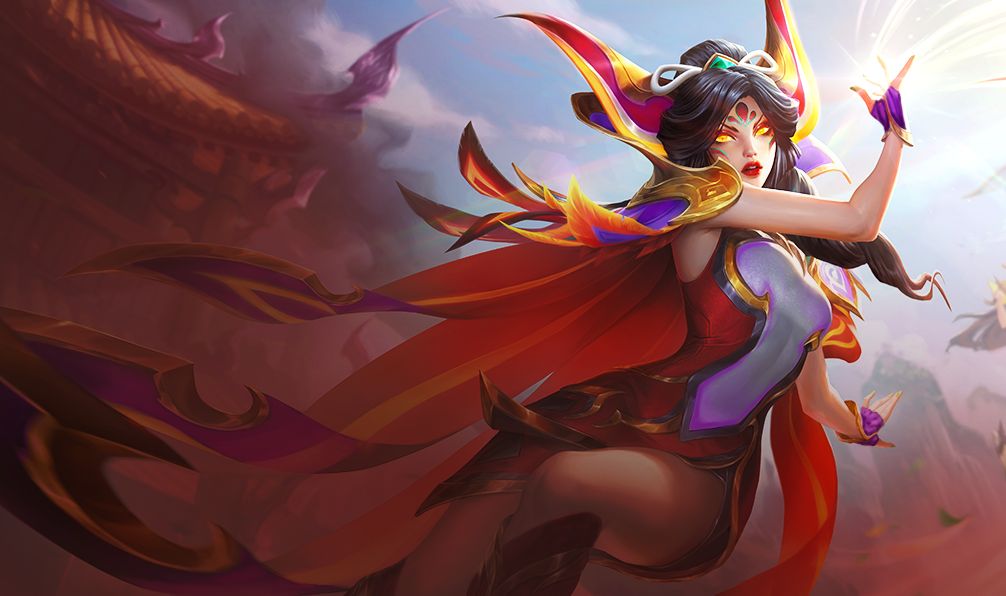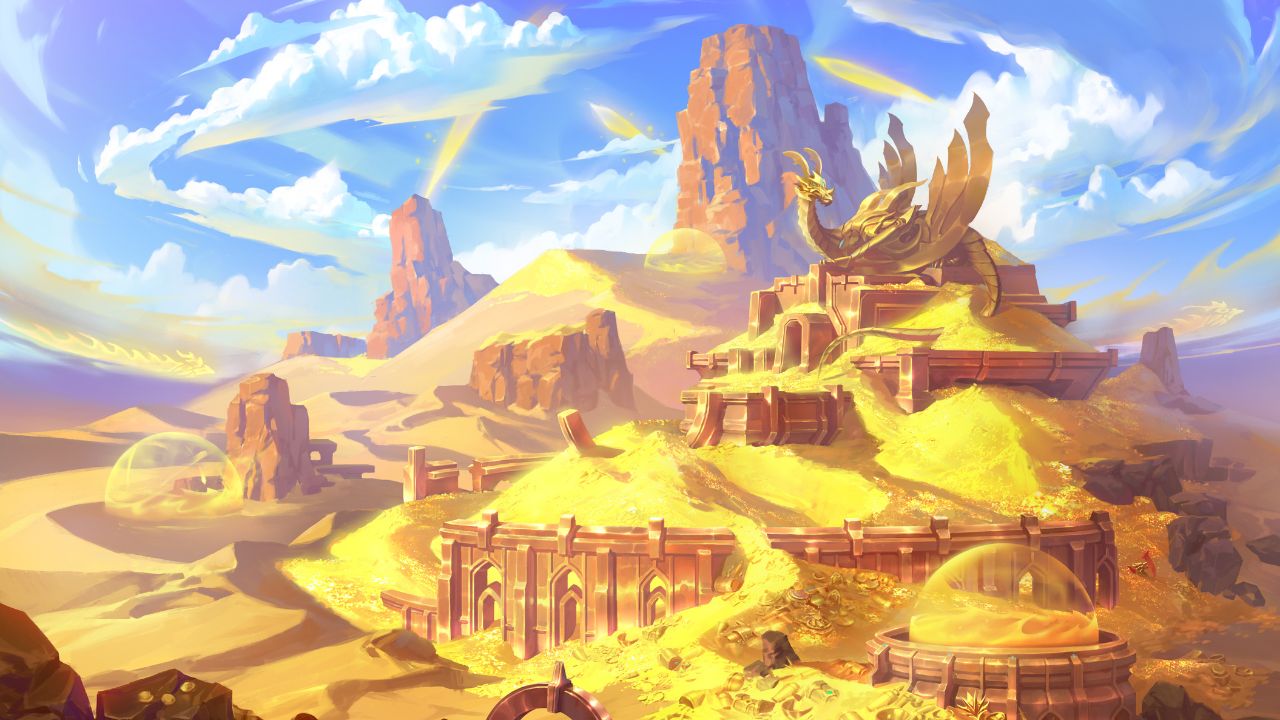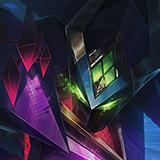With a bit over a month left in Dragonlands, it’s time to take a bird’s dragon’s eye view of what we promised we’d improve upon and do better in our next set, Monsters Attack!
TL;DR
This is a long one, and we’re going to get very game-designy, so here’s the TL;DR:
Looking Back: This is where we directly respond to the goals we created last set in our previous Learnings article.
- Variance and Novelty: Dragonlands succeeded in new unit design by reducing reprints, but it fell short with variance that relied upon Augments and Treasure Dragons. Our future set plans to add more variance through both traits and twists on existing systems.
- Item Systems Pain Points: The Treasure Dragon solved one of our biggest Item pain points, but the Treasure Dragon is endemic to Dragonlands, and our next set needs a new solution. Item Anvils let you choose from a number of full item or component options, and we hope they solve the pain of late game item distribution in a healthy way, and we’ll continue to use the Anvils as a long-term addition to TFT.
- Spatulas and Emblems: After two sets of no-transformative Emblems, we committed to allowing Emblems to do weird and exciting things, but we went too far. Synergies like Revel Daeja, Dragonmancer Nunu, and Assassin Olaf dominated games, but have also led to the creation of a new framework with balancing Emblems. So with our next set, Emblems can still be used to create cool combos… just not the game warping ones you’re used to seeing.
- Augments: With Augments becoming an evergreen feature of TFT, we’re committed to increasing focus and resources to make sure that Augments are better balanced and fun at all points in the game.
Looking Forward: This is where we set out a list of goals to improve upon for the next set, Monsters Attack!
- Compositional Variety: Our biggest learning from Dragonlands is that we never want to reduce the amount of possible team building outcomes. Moving forward, systems, traits, or champions mechanics won’t limit your ability to consider combinations in the team building part of the game.
- Dragons: By taking up two slots, being pricey, and adding 3 to their origin trait, Dragons hindered composition variety and flexibility. So, moving forward, we’re taking a LONG break from 2-slot champions in TFT.
- Champion Power Expectations: Some TFT truths have been ingrained in the players’ minds since day one. For instance, a more expensive 2-star unit should be more powerful than a less expensive 2-star. With Dragonmancer and Guild Xayah comps, we broke that rule. In the future, we need to be extremely careful with anything that challenges the core assumptions of how TFT works, and not break those expectations with champ, trait, and Augment designs.
- Early Game Economy & Risk/Reward: After experimenting with drip reward economic traits in Dragonlands and realizing they warp the general flow of the early game, we’re going to focus more on designing economic traits around the cashout philosophy (one big burst of econ power).
- Bugs & Balance: In Dragonlands and Uncharted Realms, we launched with more bugs than is acceptable. We let you down here. The team has already begun taking steps to combat the challenges that complex set releases create so we can deliver you a higher quality launch in the future. We hope to update you on those steps soon.
- Augments: While we’ve had a tough time with a few Augments throughout the set, we’re happy with the variance and excitement that Augments add to the game, and we’re committed to taking the Augment system to the next level with our next set.
Looking Back
To start off, let’s take a look at the last learnings article and see how we did.
Variance and Novelty:
With Gizmos & Gadgets, our biggest takeaway was the importance of variance and novelty. This continues to be true as we discuss the learnings from Dragonlands—because while we had some successes, there were also key areas of improvement.
Last we spoke about Variance and Novelty, we committed to cutting down the number of reprinted 3 and 4-cost champions and traits. Dragonlands delivered on that promise without any 4-cost reprints, keeping only Diana, Lulu, and Nunu as true reprints. You could argue some champions like Pantheon resembled previous versions, but this is closer to where we want to see champion reprints in the future: if they come back, they come back at different costs with different twists. Reprinting units at a higher cost also allows us to add layers of excitement to a champion, rather than take them away or keep them the same.
On the trait side, only what we’re calling “base classes” got reprinted. Things like Assassin, Bruiser, Cavalier, Mage, Mystic, etc. These will likely get used more often, as there are only so many ways to say “Give your team Magic Resist.” We’d rather not just add complexity for the sake of it, so we will continue to keep our reprints low in the higher tier champs and origins, while keeping certain base classes around. Though I will say, I am so excited for Monsters Attack! to not have Assassin—I need a break!
Previously, we also talked about adding variation to the game in small ways that lead to more potential outcomes—here, I still think we can do more than we managed to in Dragonlands. Augment differentiation carried a lot of the burden of variance, and so did distribution of Augment power (e.g. Silver/Silver/Gold game and a triple Prismatic feel insanely different). Treasure Dragon (along with the Radiant and Chaos dragon) was hoping to add some of this as well, but became more of a singular system that you interacted with each game rather than adding variance. As for Traits, Mirage and Shimmerscale helped a bit, but with Traits, you can opt out of that variant experience. Playing Xayah and Seraphine comps every game could still make games repetitive. Dragonlands didn’t move the needle enough in this area, so we are still committed to adding more systems that increase variation in small ways.
Item Systems Pain Points:
In our last Learnings, we talked about how maddening it was to go into Raptors with an AP comp and get two swords and a cloak. We committed a major change to the 4-7 round to help address this pain point: the Treasure Dragon helped you finalize your build by deciding how many times you wanted to roll a bit of gold to get a key component.
We think this was a huge win for the game without enabling comp forcing too much, as you could basically guarantee one full item you needed, but that’s about it (and even that wasn’t 100%). However, we can’t keep Treasure Dragon (sadge). It was built thematically for Dragonlands and will feel very odd in future sets. We also can’t just keep adding set mechanics and keeping them forever—this will lead to wild bloat in TFT’s complexity and leave little room for new mechanics (and reduce novelty, which we discussed is our biggest priority). We can’t just go back. So what’s the plan?
Enter Item Anvils (name WIP)! I’m pretty excited for these to combine our learnings from Armories in Reckoning as well as the Treasure Dragon. The Stage 4-7 PVE encounter will always drop a component Anvil, allowing you to pick a component to finish off a key item, giving you agency and aligning with your build. This helps reduce those painful moments without going full Armories (which leads to forcing). In addition, we will be dropping full Item Anvils in Stage 5-7 and 6-7. No more getting another Sunfire while your opponent gets a Shroud!
So we believe Item Anvils are a healthy solution to late game item distribution, and we’ll continue to use the Anvils as a long-term addition to TFT. We also think there is a very key learning here: secondary set mechanics help us explore possible evergreen solutions/additions to TFT without having to fully commit if the solution doesn’t work. And—huge spoiler—expect us to continue experimenting with set mechanics like this, because TFT’s set model and amazingly responsive community make it possible to constantly iterate on players’ favorite features.
Spatulas and Emblems:
In the last article, we talked about how Reckoning and Gizmos & Gadgets had pretty non-transformative Emblems, so we committed to making sure a few of our Dragonlands Emblems were transformative and would “lean into weird cases instead of backing away from them.” Well… I think after Dragonlands the response was, “Wait go back! Go back!”
We certainly did what we promised… but maybe not for the better. Right away, we were forced to adjust Revel Anivia and Shyvana just because of the Emblem. That still left Revel Daeja for all of Dragonlands. Early on, Mage Aurelion Sol also required a champ rework. Whispers Daeja became a terror, not to mention Whispers Seraphine on PBE. Dragonmancer Nunu demolished half of our player base at the start of Uncharted Realms. Assassin Olaf, Cavalier Yasuo, Warrior Graves, and so many more. And don’t even get me started on Astral Emblem! Sheeesh! Needless to say, we clearly went too far in the other direction, and the game suffered because of it.
There was a silver lining, though: this helped us to build a solid framework for how Emblems should relate to their core champions. For each future Emblem, we need to understand who the best user of that trait is (for example, if we were talking about Revel, we would bring up Corki). From there, every other unit in the roster should either fall below that output or only slightly above it, so that the trait’s core limits aren’t being broken. This way we don’t wind up with a trait-breaking champ like Daeja, or a trait like Revel that doesn’t actually synergize with its own champions. So in the TFT: Monsters Attack! Emblems will still create exciting combos, but nothing as game warping as the cases you saw in Dragonlands.
Augments:
Augments could be their own article. It’s such a major topic that I’m going to address it in both sections, especially now that we’ve announced Augments will remain an evergreen TFT feature, but for this part let’s focus on what we said last time. We first committed to introducing other ways to make your Augment choices more consistent, and delivered on that with the Augment Reroll button. This was a success! We’ll be keeping the feature because it creates a solid skill expression of when to use it, and allows players to opt out of a bad roll.
We also committed to dramatically improving the power balance of Augments, and improving the distribution rules to remove dead choices, but it’s pretty clear we still have a lot of room to grow in this area. In Dragonlands, there were unacceptable periods of time where your first Augment choice drastically impacted your ability to do well in a lobby. Combos like Think Fast on 2-1 with Astral, or Better Together with Seraphine, led to some of the worst Augment balance states we’ve seen to date.
We have to do better here, so we’ve actually expanded the team to allow some of us to focus solely on Augments. While Dragonlands had its hurdles, we won’t shy away from exploring fun features like Augments, and will work on making sure they’re more balanced at all points in the game. It’s not going to be easy or immediate, but we will get there.
Looking Forward
Compositional Variety:
One of our biggest Dragonlands learnings was this: TFT is at its best when there are TONS of viable team comps. The sheer number of combos possible from mixing and matching units, traits, items, and Augments means you can play a thousand times and still see something new. (My highlight was an 8 Mirage Electric Overload and 8 Guardian game! What’s yours?). Replayability and discovery potential are super important, and reducing variation of team outcomes is rarely (if ever) the right call for the game.
Scalescorn is a good example: for thematic reasons, it said “You can’t play this trait with any of the Dragons.” This made some sense… but also limited the ways you can play the comp, and led to really-feels-bad moments where you might high roll an Idas and be forced to pass on it. It essentially created dead rolls in your shop.
Moving forward, we won’t add any mechanics to systems, traits, or champions that limit your ability to consider team-building combinations. As we progressed to Uncharted Realms, the game clearly became better when you were allowed to experiment with unlikely comps. And with this concept in mind, let’s talk about the greatest offender, Dragons…
Dragons:
Dragons are related to the above section, but are also an extremely important topic in their own right. The short version is that Dragons will go down as a massive learning for TFT. They clearly weren’t successful in the ways we had hoped. From a thematic point of view, centering your comp around big, powerful Dragons sounds awesome. But from a mechanics standpoint, any level of thematic appeal couldn’t compensate for the harm they caused.
At the start of Dragonlands, we said “You can only have 1 Dragon”. This was a huge mistake that limited compositional variety more than anything else before it. Once you grabbed an Idas, 6 other champs were now dead shop rolls, and you had to play around this massive Dragon. Plus, it gave you +3 of a trait, which clearly signaled that you needed to invest in that trait. If you played Shyvana, you needed to go at least 4 Ragewing, which again, limited possible pivot options. While we were able to correct this for Uncharted Realms, it didn’t fully solve things, because Dragons still had multiple mechanical issues.
The next issue with Dragons was their cost—both in gold and team slots. While we’d experimented with 2 slot Colossus in Gizmos & Gadgets, we only really used it on tanks. “But what would a 2 slot ranged AP carry look like?” we asked. Well… you know the answer.
Larger than life, sure, but now the cost to change your comp was massive. Rolling down and holding two Sy’fens often meant 14-16 gold just sitting there, and if you did manage to hit, you needed to weigh the impact of taking out two units instead of subbing one unit for another on the fly.
Finally, adding +3 to Origin traits also had major implications. You’d either get champs that didn’t actually need their dragon origin (Aurelion Sol, Ao Shin) or the other extreme, going as vertical as possible (Shi Oh Yu, Daeja). Even with options like Guild Daeja not needing more than 4 Mirage, from many players' perspectives, the game was signaling they had to play this way, which again, limited options.
So moving forward, we’re going to be taking a LONG break from 2-slot champions in TFT. We think there is a little room in this space via limited traits, but overall this mechanic wasn’t healthy for TFT in the long run.
Champion Power Expectations:Over the years, players have formed certain expectations about how TFT should work. Some of these are fundamental and obvious, and when we break those, things go horribly wrong!
Let’s take the obvious statement that a 2-star four cost champion should be stronger than a 2-star three cost champion. This feels like something that players can all agree is true…right?
Well, traits like Dragonmancer which funneled all of the traits power into a single champion began to really break down that rule. Players began seeing what they perceived as a 2-star three cost Nunu for example, going around and deleting 2-star 7 and 8 cost dragons with ease and being unkillable, which WILDLY distorted this perception. Players felt like they had stronger champions with traits enabled, and were still losing. The way this trait funneled so much power into low cost synergistic champions was a problem.
Dragonmancer was the most extreme example of this, but Dragons were also guilty here. If I had a 2-star Shi Oh Yu with good items and traits, and you had a 2-star Xayah with good items and traits, the common perception was that my carry costs more and I should win this fight…right? But the meta showed that was very often not the case, which again, left players wondering what they did wrong. “I built a more expensive and stronger carry correctly, why am I losing?”
In the future, we need to be extremely careful with anything that challenges the core assumptions of how TFT works, and not break those expectations with champ, trait, and Augment designs. It won’t be easy, or black and white, but we are going to be a lot more careful about it moving forward.
Early Game Economy & Risk/Reward:So, we’ve talked before about how economic traits are important for TFT and making sure they are both accessible and exciting. Shimmerscale (and to a lesser extent Astral and Lagoon) offered us some further insights that are worth discussing; those insights being the difference between drip rewards and cash out rewards.
Drip rewards are where every turn you do something, you are rewarded with a small reward. Astral did this with an Orb every turn, Shimmerscale would give you 2 or more gold each turn if you used the items correctly, etc. These drip rewards are extremely powerful, especially in Stage 2 due to the way compounding interest in our economy works. If I give you an extra 5 gold in 2-1 and 2-2, you can now make even more from the base interest, and you now have a very large economic advantage over your opponents.
By comparison, cashout rewards trigger after you’ve done something for an extended period of time. The closest we had to this in Dragonlands was Determined Investor (Shimmerscale Item), but the more common trope here is Fortune and Mercenary.
It’s important to understand why cashouts are healthier and more fun for the game. If I offered players 2g every turn, or 25g in 10 turns, most players would agree that getting that 25g all at once is much more satisfying. But it might surprise you to learn that the 2g per turn is FAR more powerful, especially early. And that’s…kind of the worst case: when the stronger option is also less fun.
Moving forward, we’re going to focus on designing economic traits around the cashout philosophy, and actively avoid drip economy in the early game as it warps the general game flow. Notice that this philosophy specifically addresses the EARLY game. An 8-gold-per-turn trait that you can’t get until Stage 4 or later doesn’t warp things too much, because by then, you’ve probably settled into your economy and comp. It’s also worth noting that this is specifically for traits, because you can pivot out of traits. Economy Augments are also fine because once you pick them, you’re stuck with them, and we can balance around that tradeoff.
Bugs & Balance:
I’m going to be blunt here. We let you down in this area. Both Dragonlands and Uncharted Realms launched with more bugs than is acceptable, and it took us way too long to get the balance right. There’s a bit of ‘we bit off more than we could chew’ here, as shipping new mechanics like Dragons in addition to Augments led to some pretty challenging content combinations to get right. Even in the cosmetics space, pushing the boundaries with map openers and boom types led to some difficult issues that took us a while to catch.
This isn’t going to be something we can fix overnight, as TFT is a complicated game, and believe it or not, making games is hard, but I’m not here to harp on development challenges. Instead, I’ll tell you that we have already begun taking large steps in the TFT team to combat these challenges and deliver you a higher quality set at launch in the future. You may have seen the team share new positions on our Game Anaylsis Team (GAT) already—and if you’re reading this longform piece maybe that position (or a similar TFT role) is something you’re interested in. Hiring for this new analysis team is but one step we are taking, but like hiring, these steps take time. So, I’m excited to talk more about the path to combat bugs and balance challenges in the future, but for now, thank you for your patience. This is a very important issue for the team, because it is a very important issue for all of you.
Augments:
Finally, let's talk about Augments. Again. As mentioned, Augments are now a permanent part of TFT. This is super exciting because Augments, as a system, have so much potential. But it's clear the system has some pretty big issues to resolve.
Certain Augments are still too powerful in the early game, and having a choice on 2-1 that snowballs your odds of doing well later on is a bit much (the most extreme example being the way Think Fast on 2-1 synergized with Astral before it was removed in Uncharted Realms).
On the other end of the spectrum, weaker Augments that overtly limited play possibilities were also a big miss. Things like Cutthroat or Penitence just weren’t worth getting excited about, and Soul Siphon was just plain confusing (not to mention it didn’t even function for a patch).
But we should also acknowledge what made Augments successful. Built Different and Double Trouble presented fun challenges that encouraged you to play a different way, and new Augments like Cruel Pact (post rework) and Consistency created some memorable moments in-game. We still have tons of ideas for new Augment types and ways to iterate on ones that weren’t quite working (but got pretty close).
We’re committed to taking the Augment system to the next level, not just leaving it as-is and cycling out Augments each set. For Monsters Attack! we're even leaning into them as part of the core mechanic, and future sets have plans to take the system further still—plans I can’t wait to share with you. So keep giving us your thoughts on the Augment system, because we’re listening.
That’s it for now. Thanks for playing TFT and giving us your feedback. These articles are just one way of saying we hear you; the other way is by applying our learnings in Monsters Attack! and beyond. In fact, we may have something to share as soon as tomorrow… so stay tuned! Until then, take it easy!

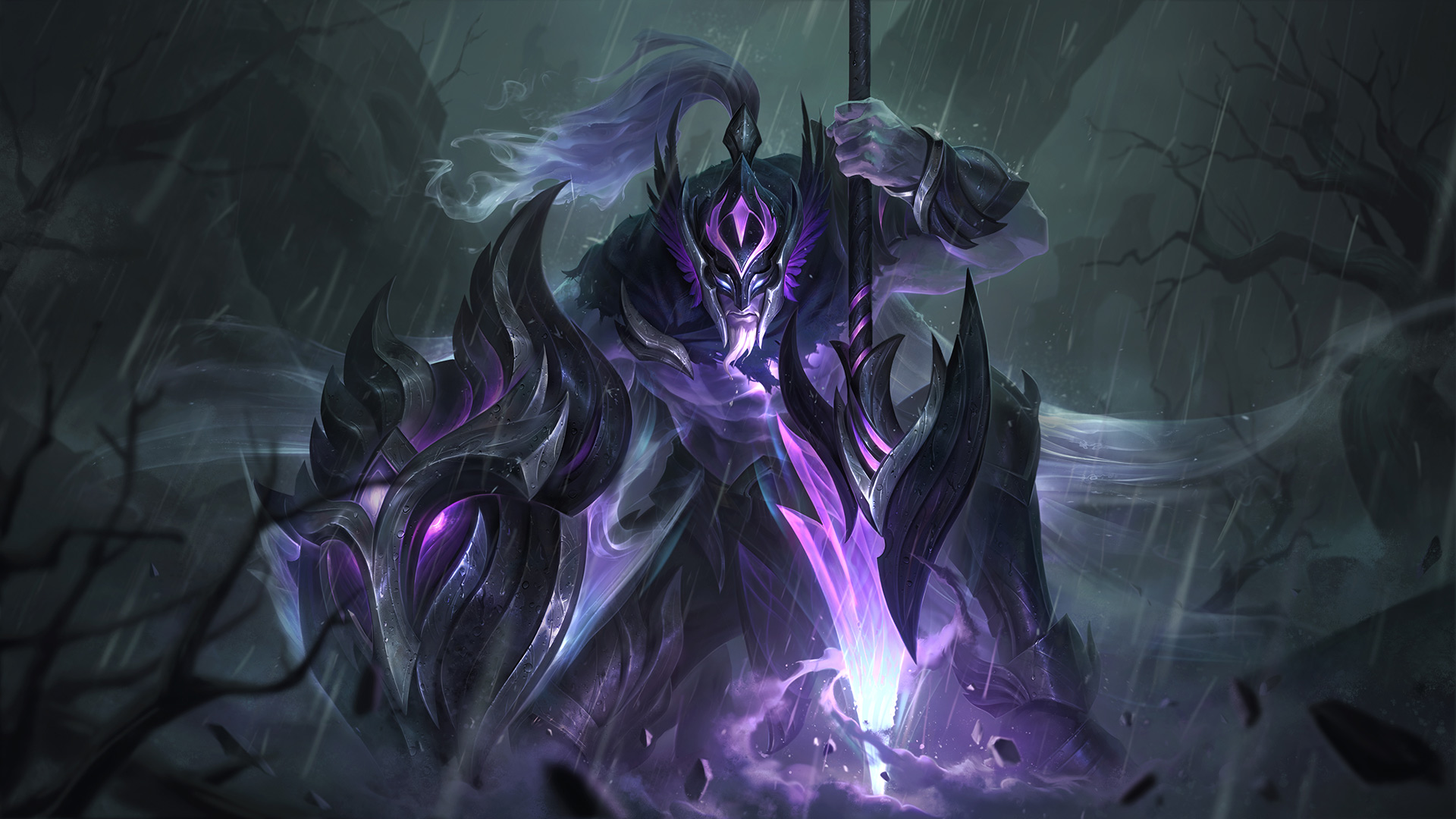

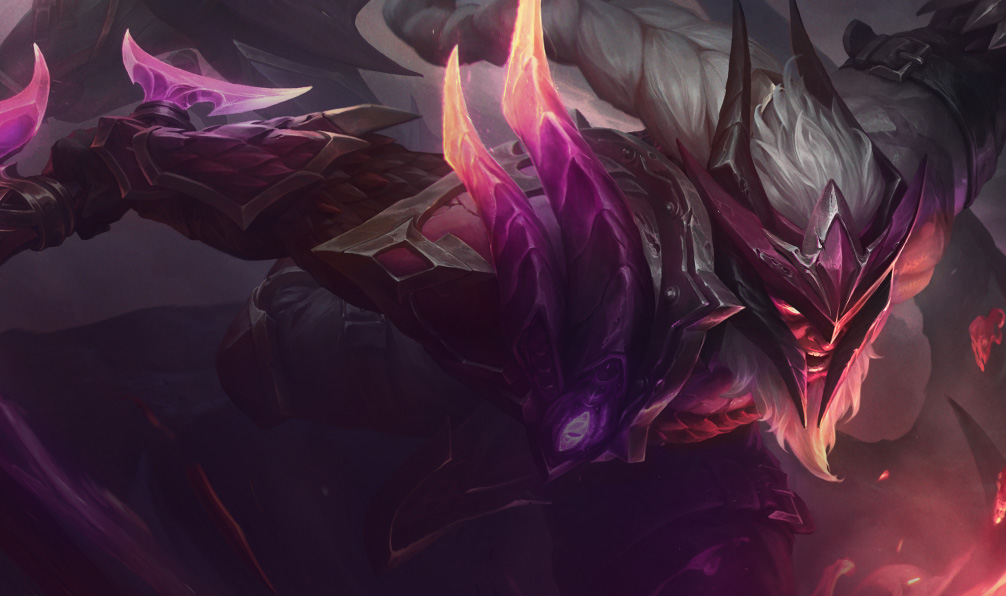
.jpg)
